
I love this image that my friend Jonas put this image together for me (thanks, Jonas!). Now that I've got a bike stand (borrowed from my friend, Mike), I feel more fully engaged in the bicycle life than ever.
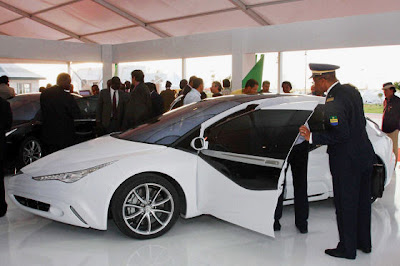


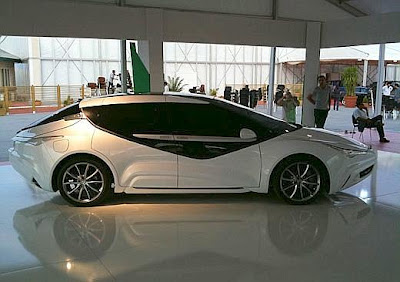
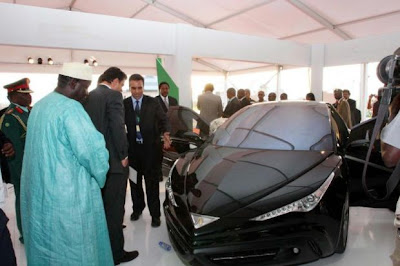
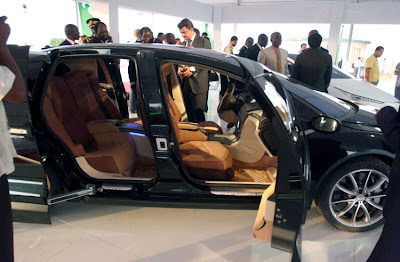
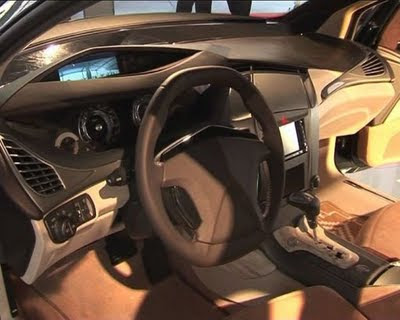

Here is the 2009 version of Muammar Gaddafis "Saroukh el-Jamahiriya (Libyan Rocket)" a car which made its debut in 1999, exactly 10 years ago.
The “Libyan Rocket”, as the prototype is called, is described as an “elegant sedan” 17 feet long, more than six feet wide, with a 3-liter, V-6 gasoline engine.According to the BBC and Fox News, it also has airbags, an unspecified ‘electronic defense system’, and a collapsible bumper.
The car can go hundreds of miles on a flat tire, a feature that could come in handy while driving in the vast Libyan desert. Other safety features include a device to cut off the fuel supply to avoid a fire in case of accident.
Domenico Morali, CEO of Tesco TS SpA, an automotive design company based in Turin, Italy, said Qaddafi joined in discussions about the car’s styling and asked for an original car using Libyan materials including marble, leather and fabric.
The car was unveiled in Tripoli at the end of an African Union summit.
According to the BBC, construction of a factory to produce the car was to have began in October 2009 in Tripoli. (ANI)
I'm not sure that reducing individual resource use is the entire way forward. At the root, religious philosophies say to do less harm, yes, but they also say do more good. There is a limit to how much less harm I can do. But my potential for good is unlimited. All of our potentials for good are unlimited.I agree with Colin that it will take both individual and collective action to effect that need to occur. Us giving up our car is certainly a tiny drop in the bucket, but it does have an impact, and it also increases the awareness of the people around us (and ourselves), and that can ripple outward in a powerful way.
The question becomes not whether we use resources but what we use them for. Do we use them to improve lives? Or do we waste them? My life itself is a resource. How shall I use it?















The Barnard is powered by a twin-turbo Porsche V8 engine with a power rating of 617bhp (460kW). It should deliver a sub-4 second 0 - 60mph time and a theoretical top speed of over 240mph (386km/h). Only the driver really holds those horses back because the Barnard is missing some equipment namely power steering, ABS brakes and traction control. Even the windows require manual manpower to operate. It's a contrast to the cockpit which is inspired by one of Barnard's other interests, aviation.
Built on a monocoque chassis that's made from lightweight hi-tech steels like Domex and Docol, the car is more race road car than anything else. It's designed to accommodate buyers' interests and can be personalised to a great extent, depending on budgets offered. The engine itself can be uprated to suit the buyer's desires.
"This is a car which has been built with the objective of breaking barriers, and no expense has been spared to make it into what I believe is the most single-minded performance machine yet from South Africa," Barnard said.
To help keep it on the road are things like a rear diffuser, a flat undertray and cutouts on the front wheel arches that generate larges doses of downforce.
Customer deliveries of the Barnard will begin in the middle of the year at a cost of about R1.1 million (about US$110,000) a pop.
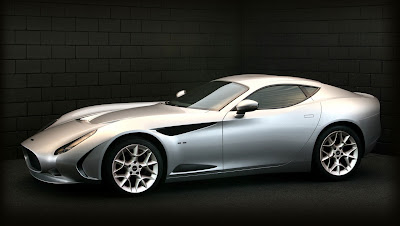





The Laraki Borac
(Morocco)Manufactured by the Laraki group.
It was originally unveiled as a concept at the 2005 Geneva Motor Show. The car is planned for production, although a final design has yet to be unveiled.
The design of the Borac is that of a GT, with a front engine layout and seats 4 passengers. The 2 rear seats are small, probably for children instead of adults. The Borac is a totally independant design from the companies first model the Fulgura.
A Mercesdes 6.0L V12 powers the Borac, with a impressive 0 - 60mph in 4.5 seconds.






